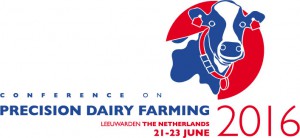Despite the high initial investment many dairy producers are incorporating new technologses into their daily farm operations and seeing great results. Other dairy producers are resistant to new technology, preferring to farm using more traditional methods. Here’s the catch: two farms could be located a quarter mile down the road from each other but the way they use technology could be the exact opposite. So what’s the difference? Why do some producers decide to invest in new technologies and others opt out?
A recent University of Kentucky study published in the Journal of Dairy Science surveyed 109 dairy producers about their perception of dairy farming technology. The farms surveyed ranged from less than 100 cows to greater than 600 cows, with a median farm size of 230 mature cows. Only 69% of producers surveyed had invested in at least one form of technology on their dairy.
Not surprisingly, the oldest and most widely available technologies were the most commonly used. The number one technology was daily milk weights (52% of respondents) followed by activity monitoring (41%), mastitis detection (26%), and cow level milk component data (25%). Ten percent of the farms surveyed had invested in rumination monitoring technology. The least commonly reported technologies were for automated body condition scoring (3%), methane emissions (2%), respiratory rate (2%), and rumen pH (1%), all of which are just arriving on the commercial market.
“Benefit to cost ratio” was one of the biggest factors that would sway a producer’s decision to invest. There was a special interest in technology that replaced or shifted labor requirements, especially on small farms where high labor demand can prevent producers from living a more normal lifestyle. Producers also identified a need for improving the interface between technologies, because having to enter data twice can be frustrating and time-consuming. Producers who use technology based more of their decision-making on the availability of local technical support, demonstrating the producer’s desire to learn to use their technology effectively.
Estrus detection was perceived to be more useful by farms that had not adopted technology. On the other hand, farms that have adopted technology perceived daily milk yield and rumination to be more important. All producers reported that mastitis technology would be useful on their farms.
Understanding the preferences and perceptions of dairy producers may be a useful in identifying new areas for technology development. In addition, tailoring outreach and marketing efforts to the factors that producers find important when making investment decisions could help promote adoption of new technology more rapidly. Every farm is unique, and technology that works well for some may not be worth the investment for others, however at the end of the day incorporating technology appropriately can increase production efficiency and improve the bottom line.
 You can learn more about precision dairy at the 2015 Conference and Expo on Precision Dairy Farming. It will be held at the Mayo Civic Center in Rochester, Minnesota, June 24 and 25, 2015. The program will include dairy producer showcase sessions, many industry updates, and three plenary talks that will summarize practical precision dairy management information. Learn more and register here: http://www.precisiondairyfarming.com/2015/
You can learn more about precision dairy at the 2015 Conference and Expo on Precision Dairy Farming. It will be held at the Mayo Civic Center in Rochester, Minnesota, June 24 and 25, 2015. The program will include dairy producer showcase sessions, many industry updates, and three plenary talks that will summarize practical precision dairy management information. Learn more and register here: http://www.precisiondairyfarming.com/2015/









